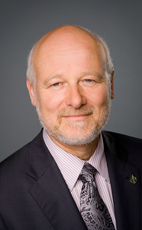Madam Speaker, it is a pleasure to rise on behalf of the official opposition to address Bill S-14, an act respecting Sir John A. Macdonald day and Sir Wilfrid Laurier day.
Sir John A. was born on January 11, 1815 and was of course our first prime minister. Sir Wilfrid Laurier was born on November 20, 1841, and was the prime minister of Canada from 1896 to 1911.
It is my understanding that the purpose of the bill is to designate January 11 of every year as Sir John A. Macdonald Day and November 20 of every year as Sir Wilfrid Laurier Day. I also understand that a variation of the bill was introduced in the last parliament only honouring Sir John A. Macdonald and to remove a partisan twinge in the other place, I say the other place is not represented by the elected commons and therefore that caveat does not play well here.
I would like to make clear that the bill does not ask for the declaration of a national holiday. It is simply recognizing two great Canadians.
We approve in principle any efforts to allow Canadians to appreciate their history. The fact that these two great Canadians come from different traditions is a very positive thing. We feel that the bill will put these dates on the parliamentary calendar, the national calendar and will provide an opportunity for teachers, for parents and for Canadian society to honour the memory of two great Canadians.
Inasmuch as there is no attempt to declare these days official holidays, there is no financial implications to Canadians, employers and otherwise. We think that is a very positive aspect of the bill.
In reflecting on the contribution of these great Canadians, I came across a debate about the contributions by Sir John A. Macdonald in the early days when they were considering this union. I would just like to state a brief quote where Sir John A. was speaking about this union. He said:
When this union takes place we will be at the outset no inconsiderable people. We find ourselves with a population approaching four millions of souls...And with a rapidly increasing population...our future progress, during the next quarter of a century, will be vastly greater.
That was received with cheers.
He went on to say:
And when, by means of this rapid increase, we become a nation of eight or nine millions of inhabitants, our alliance will be worthy of being sought by the great nations of the earth.
Hon. members responded “Hear, hear”.
It is interesting to reflect that at the time of independence, 1931, Canada's population was around 10.5 million.
Canadians need to reinforce our sense of identity. We do well to remember men and women of distinction who have contributed greatly to these institutions of democracy that we now labour to protect.
Sir John A. Macdonald and Sir Wilfrid Laurier are without doubt worthy of this recognition. We support the bill, and we hope that it will contribute to our appreciation of our history and our heritage as Canadians.

